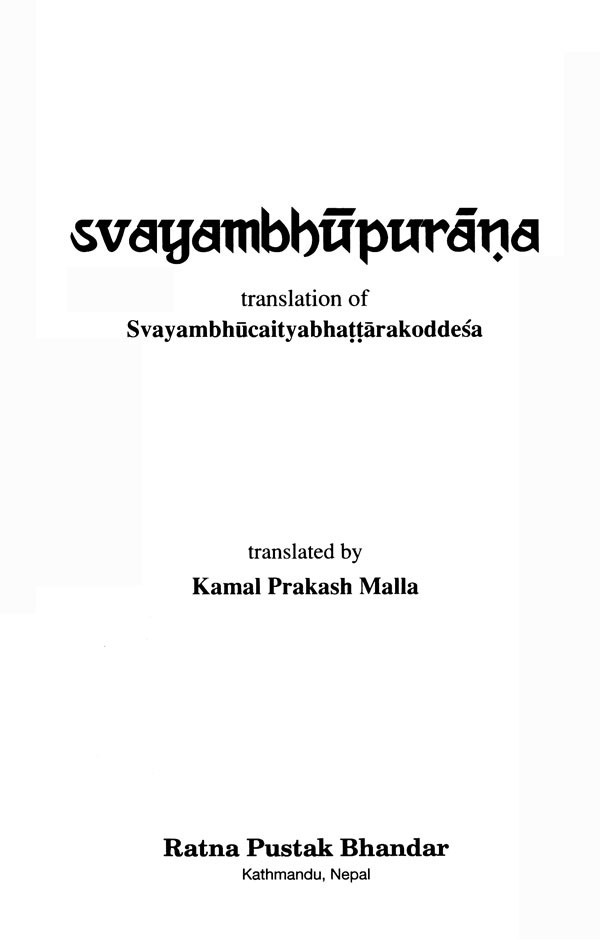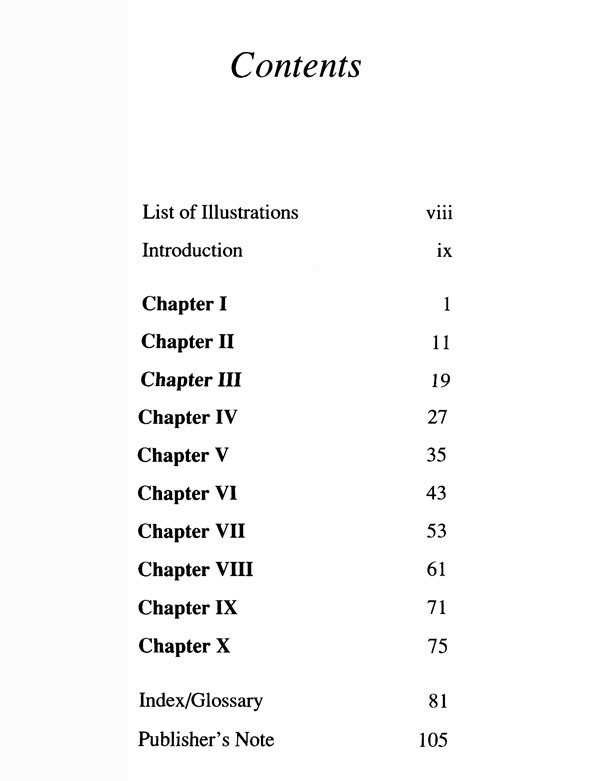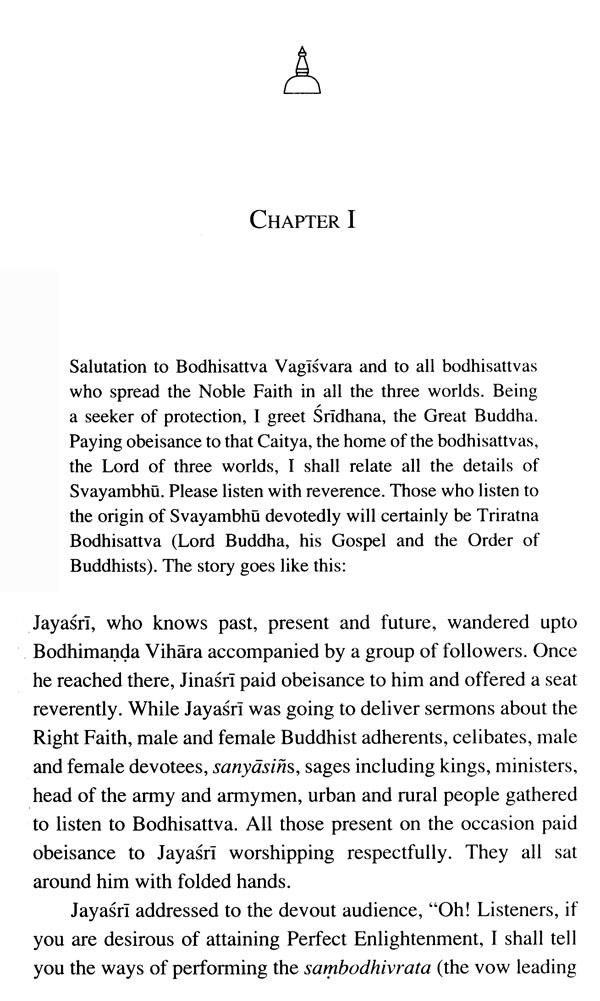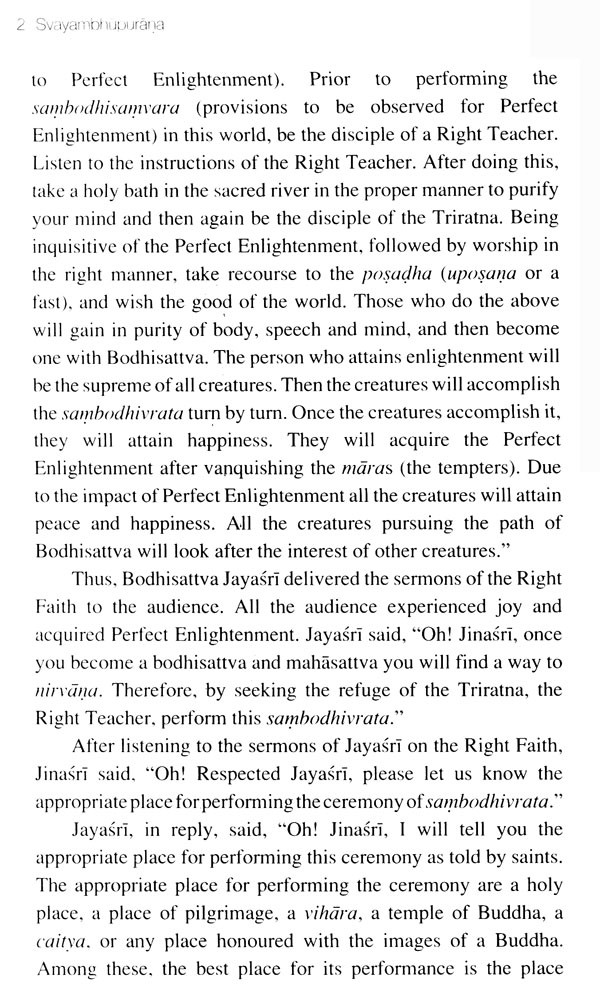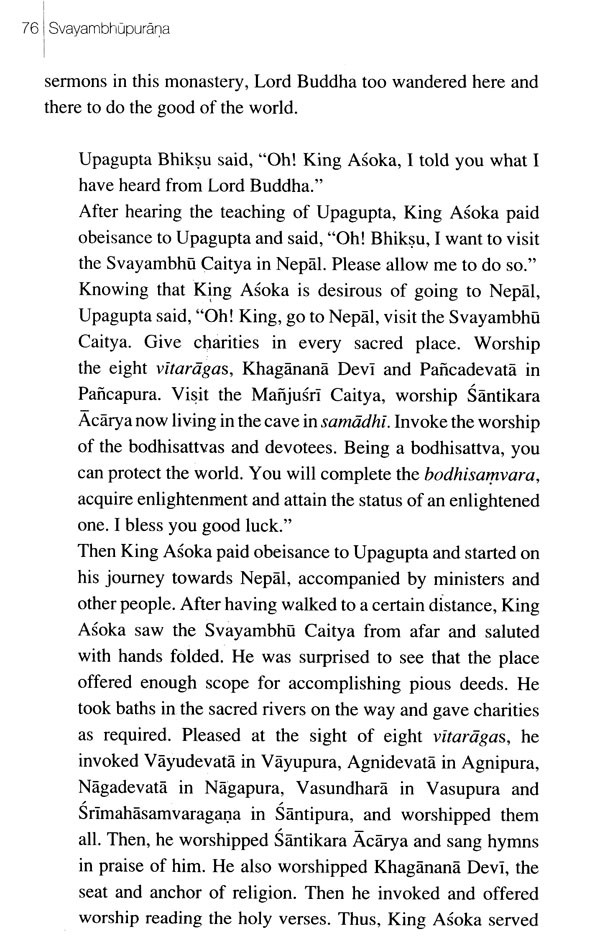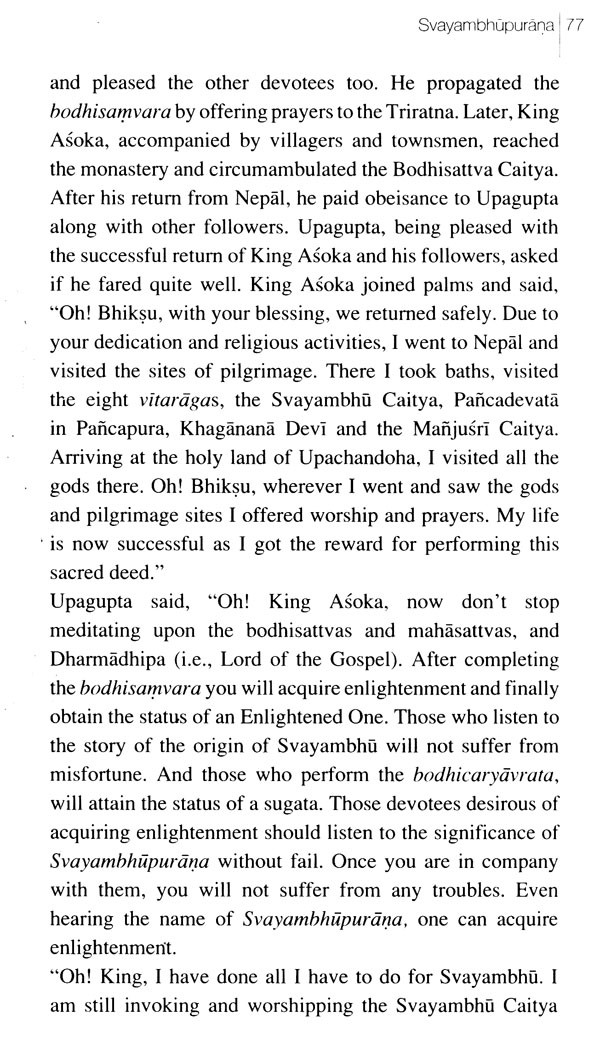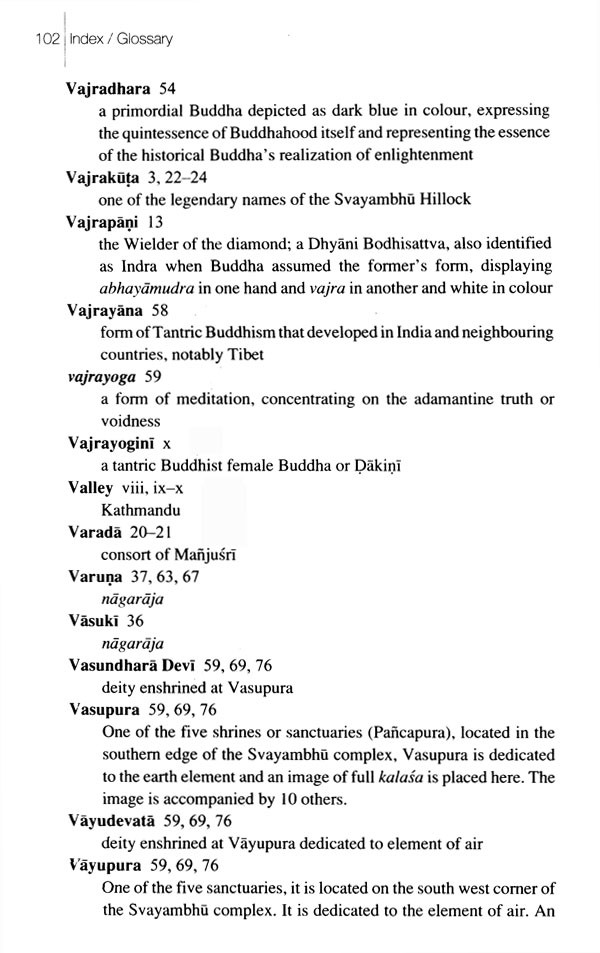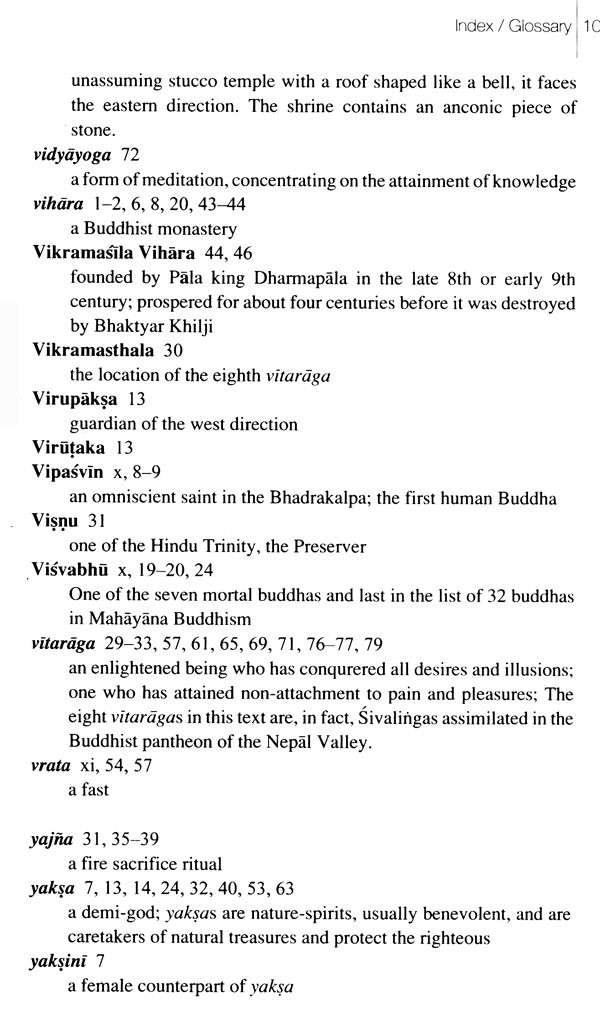About the Book This volume provides a translation of one of the most important texts in the history of the Newar Buddhist tradition. As rendered into clear English by one of Nepal's greatest modern scholars, Kamal Prakash Malla, its 10 chapters recount the origin of the Kathmandu Valley as a sacred Buddhist territory, how this holy Himalayan oasis became a center of Mahayana-Vajrayana tradition arrayed around the great Svayambhú Stúpa. The text also reveals the visits of various buddhas, bodhisattvas, and sage teachers who became central figures in local history. Also described are the mandala array of sacred centers across the landscape, places infused with the powers and presences of local protectors and tantric deities. Garlanded by lovely line drawings, and introduced by a definitive and lucid overview of the text's various recensions by renowned scholar Alexander von Rospatt, this volume becomes an instant landmark in Newar Buddhist studies.
Introduction The Svayambhupurana is a work of seminal importance for the Newar Buddhist tradition. At a time when Buddhism had all but vanished in the Indian Buddhist homeland to the south, the Purana offered a new vision of Buddhism and its history, with the historical Nepal at its center and India (and 'Great China') at its periphery. Its key point is to eulogize Nepal and render it independently from India as a sacred Buddhist land. The principal narrative device for achieving this is the Svayambhu myth. It relates that in prehistoric times, Nepal was a sacred lake on which the Buddha principle (dharmadhātu) manifested (bhu) itself spontaneously (svayam) in the form of a light or luminous caitya on the pericarp of a lotus blossom. Next, the Svayambhupurana describes the draining of the lake by Manjusri (who came from 'Mahacina' in the form of Manjudeva and took up residence in Nepal), the subsequent settlement of the Kathmandu Valley, its sanctification by tirthas, and other holy places and shrines, as well as the eventual encasement of the self-arisen dharmadhatu inside the physical Svayambhu Caitya.
**Contents and Sample Pages**
